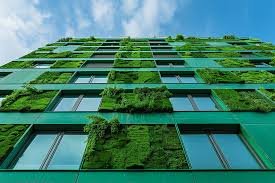Introduction
Sustainable architecture represents a shift in how we think about building design, emphasizing the aesthetic and functional aspects, environmental impact, and resource consumption. It revolves around creating structures that are harmonious with nature, significantly minimizing the carbon footprint. Here, the architect plays an essential role, blending innovation with eco-friendly practices to drive future building solutions.
This insightful guide addresses the fundamental elements of sustainable architecture, highlighting its importance and potential benefits. By exploring the principles, challenges, and case studies, we aim to furnish architects, planners, and builders with knowledge to champion sustainable practices. The fusion of technology, design, and sustainability offers a pathway to more resilient and economically viable built environments.
Sustainable Architecture: A Brief Overview
Over the years, the idea of sustainable design has developed due to a greater awareness of the environmental costs associated with traditional building techniques. It aligns with the broader environmental movement, which seeks to promote balance between human activity and the natural world. Champions of sustainable architecture have successfully advocated for designs that conserve resources, reduce waste, and encourage biodiversity. Integrating green spaces, renewable energy sources and natural light are just some practices that underscore this approach, which is increasingly becoming the new norm in building design.
Key Principles of Sustainable Design
Sustainable design is underpinned by principles that diminish reliance on non-renewable resources. Energy efficiency is at the forefront, with buildings designed to harness natural light, insulate effectively, and use advanced energy systems like photovoltaic panels. Water conservation is another cornerstone, with innovative systems like greywater recycling and rainwater catchment gaining traction. The use of sustainable materials not only involves selecting renewable or recycled resources but also considering the lifecycle impact of each material, from extraction through to disposal.
Benefits of Sustainable Architecture
Beyond its ecological merits, sustainable architecture boasts a wide array of benefits. It significantly reduces energy costs over the building’s lifespan—savings that can be reinvested in other sustainability initiatives to enhance overall efficiency. Reducing energy consumption translates into a lower operational carbon footprint, aligning with global climate targets. Furthermore, sustainable buildings often create healthier indoor environments, improving occupant well-being and productivity by leveraging natural ventilation and minimizing hazardous materials.
Materials and Technologies in Sustainable Building
The shift towards sustainable architecture involves innovation and creativity, exploring new materials, and embracing advanced technologies. Renewable resources like bamboo and straw bales offer quick replenishment and biodegradability, making them ideal for eco-conscious builders. Innovative technologies play a critical role; intelligent systems can automatically adjust lighting and temperature to reduce energy usage, while building-integrated photovoltaics transform entire buildings into power generators. Green roofs, passive solar designs, and advanced glazing techniques enhance thermal comfort and energy efficiency.
Challenges and Solutions in Sustainable Architecture
Although the advantages are clear, sustainable architecture still encounters significant hurdles. The upfront cost of integrating advanced systems and materials can be prohibitive, deterring some developers from adopting these practices. Building codes and regulations, although evolving, can sometimes restrict innovative design approaches. To overcome resistance, raising awareness and educating people about the long-term financial and ecological benefits of sustainable architecture is necessary. By offering incentives, governments can nudge the industry towards more sustainable norms.
Case Studies of Successful Sustainable Buildings
From urban offices to residential complexes, successful examples of sustainable architecture demonstrate the flexibility and effectiveness of green building strategies. The Edge in Amsterdam, often heralded as the world’s most innovative building, integrates intelligent systems to manage energy and waste efficiently. Bosco Verticale in Milan embodies the idea of a ‘vertical forest,’ offering a habitat for trees and shrubs on its facade, thereby contributing to air purification and urban cooling. These examples illustrate the potential for architecture to transform urban landscapes into healthier, more sustainable environments.
Future of Sustainable Architecture
As we look to the future, the trajectory of sustainable architecture seems inexorably upward. As the Internet of Things (IoT) and artificial intelligence (AI) advance, building systems will become more responsive and effective. These technologies promise to unlock new levels of energy efficiency and user customization. Globally, the growing commitment to carbon-neutral cities will continue to drive innovation in this field, setting an inspiring precedent for other industries. Sustainable architecture is not just about reducing harm; it’s about creating spaces that contribute positively to people and the planet, signaling a hopeful and regenerative future.











